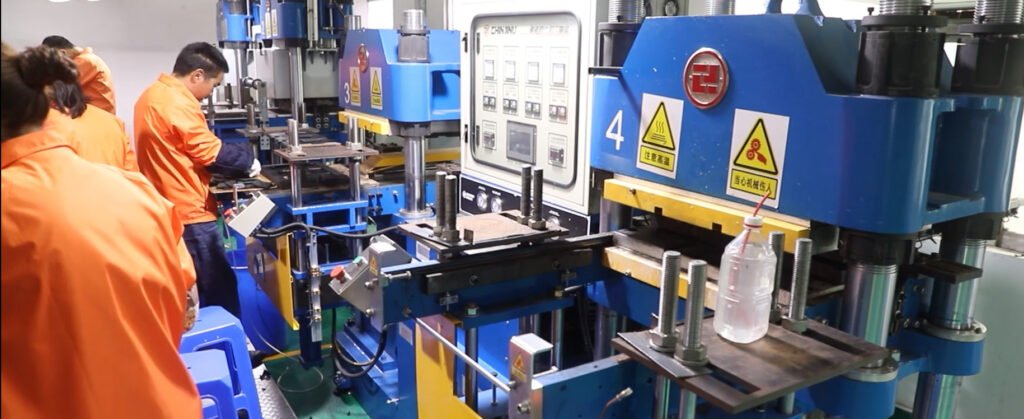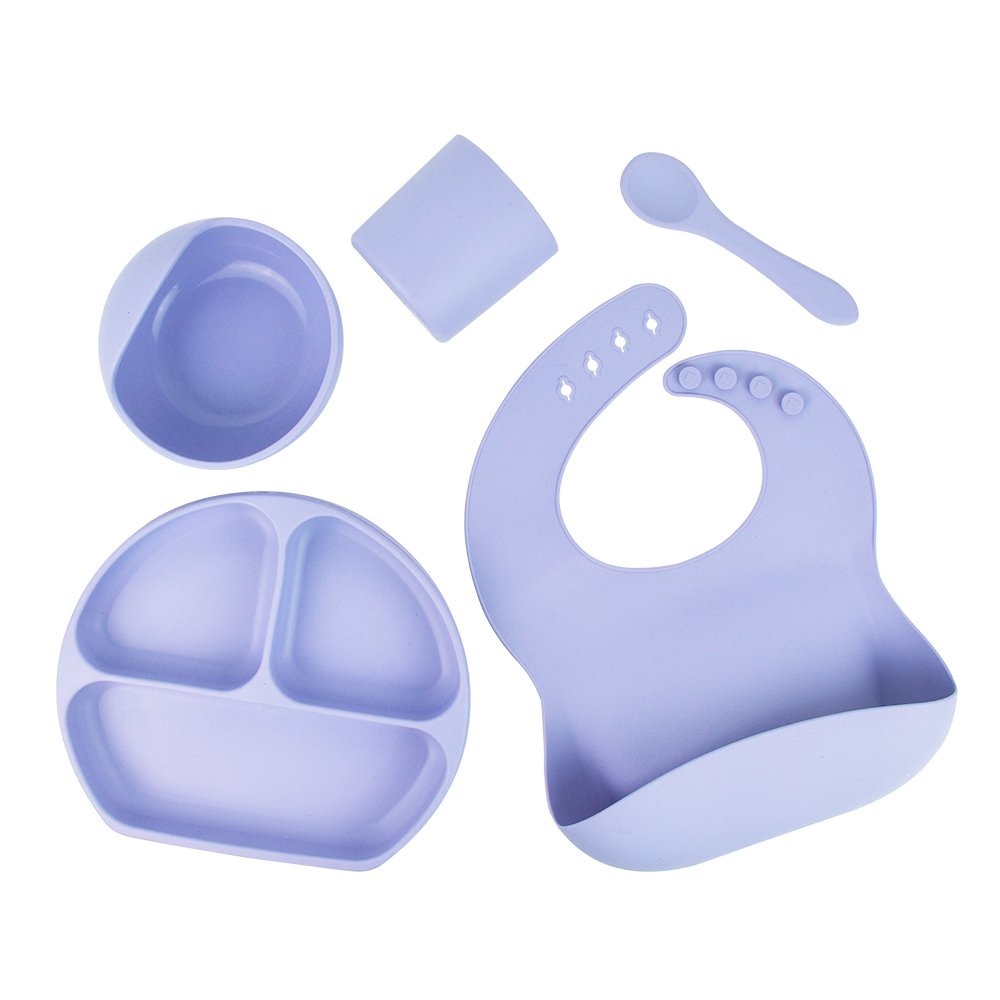In today’s competitive B2B manufacturing and consumer goods landscape, material selection is a critical factor in determining a product’s performance, durability, and cost-efficiency. Among the various materials used in custom product development, silicone has emerged as one of the most versatile and in-demand materials. But what are the advantages of silicone products, and how do they compare to alternatives like plastic, rubber, or thermoplastics?
This article is designed to help B2B buyers, product managers, and sourcing professionals better understand the key advantages of silicone, and why it’s the material of choice across industries such as baby care, kitchenware, medical, electronics, automotive, and lifestyle accessories.

Table of Contents
Toggle1. Superior Temperature Resistance
Silicone can withstand extreme temperature ranges from -60°C to 230°C, with some high-performance silicone variants going up to 300°C. In contrast:
- PVC degrades at around 70–100°C
- TPE (thermoplastic elastomers) soften around 100–150°C
- Natural rubber becomes brittle below -40°C
This makes silicone ideal for food-grade kitchenware, medical devices, baby products, and automotive seals that operate under fluctuating or harsh conditions.
✅ Use case: A silicone baby bottle nipple retains shape and safety when sterilized in boiling water—plastic alternatives may warp or leach harmful chemicals.
2. Excellent Biocompatibility & Safety
Silicone is non-toxic, hypoallergenic, odorless, and FDA/LFGB approved for food and skin contact applications. It’s often used in:
- Baby pacifiers and teething toys
- Wearable devices and smartwatches
- Medical-grade tubing and implants
By contrast, some plastics may contain BPA or phthalates, which raise safety concerns. Silicone’s inert and stable chemical nature ensures it doesn’t interact with contents or cause allergic reactions.
📊 According to a 2024 report by Grand View Research, the global baby silicone product market is expected to grow at a CAGR of 9.3% due to rising safety awareness.
3. Durability & Longevity
Silicone products offer exceptional durability:
- Highly resistant to UV, ozone, moisture, and oxidation
- Long service life (up to 10+ years in some applications)
- Doesn’t crack, harden, or deform easily
Compared to natural rubber or TPU, which may degrade after months of use, silicone provides long-term performance with minimal maintenance or replacement needs.
🔧 Example: Automotive-grade silicone gaskets can last 5–10x longer than rubber-based ones in the same environment.
4. Flexibility & Elastic Memory
Silicone has excellent elasticity and rebound, even after compression. It’s ideal for products that need to be:
- Soft and stretchable (wearables, seals)
- Molded into complex shapes (custom OEM components)
- Repeatedly bent or stretched (charging cable sleeves, lids, bands)
Unlike thermoplastics, which may break or lose shape over time, silicone maintains its form and function.
5. Eco-Friendly and Recyclable
Modern industrial silicone is recyclable and can be reused in many applications. Compared to single-use plastics, silicone is:
- More environmentally sustainable
- Reusable for hundreds or thousands of cycles
- Less likely to release microplastics into ecosystems
♻️ Many companies now switch to eco-silicone as part of their ESG (Environmental, Social, Governance) initiatives.
6. Versatile Customization & Aesthetics
Silicone can be:
- Pigmented into vibrant or translucent colors
- Molded into complex 2D/3D shapes
- Printed using laser or screen techniques
- Surface-finished to matte, glossy, or textured types
This makes silicone perfect for brand-custom products, such as OEM gadgets, promotional items, or luxury silicone packaging.
🎨 For B2B product developers, silicone offers high design freedom without compromising performance.
7. Strong Chemical and Water Resistance
Silicone resists:
- Acids and alkalis
- Water and salt solutions
- Mild detergents and cleaning agents
This makes it ideal for medical devices, kitchen tools, seals, and electronics accessories.
🧪 Comparison: Natural rubber and plastics may absorb oils or degrade in acidic environments—silicone remains unaffected.
8. Cost-Effectiveness in Long-Term Applications
While silicone’s initial unit cost is often higher than TPE or rubber, its lifecycle cost is lower due to:
- Less frequent replacement
- Lower maintenance
- Enhanced user safety and brand value
💡 ROI Insight: For B2B customers, choosing silicone reduces warranty claims, boosts brand credibility, and aligns with premium product positioning.
Silicone vs. Other Materials: Summary Table
| Feature | Silicone | Plastic (TPE/TPU) | Rubber | Metal |
|---|---|---|---|---|
| Temperature Resistance | -60°C to 230°C | 0°C to 150°C | -40°C to 100°C | High but rigid |
| Biocompatibility | Excellent | Variable | Moderate | Low |
| Flexibility & Rebound | High | Medium | High | Low |
| UV & Oxidation Resistance | Excellent | Poor | Poor | Excellent |
| Durability / Lifespan | 5–10 years+ | 1–2 years | 6–12 months | 10+ years |
| Environmental Sustainability | Good | Poor | Moderate | Poor |
| Custom Moldability | Excellent | Good | Good | Limited |
| Cost (Initial) | Moderate-High | Low | Low | High |
Final Thoughts: Why B2B Buyers Choose Silicone

For manufacturers, wholesalers, and product development teams, silicone is not just a material—it’s a strategic advantage. It helps businesses build better, safer, and longer-lasting products across industries while reducing liability and increasing user satisfaction.
Whether you are:
- A baby product brand needing FDA-safe components
- A medical device supplier requiring biocompatibility
- An electronics OEM focused on durability and aesthetics
- A lifestyle brand looking for custom, soft-touch materials
👉 Silicone should be at the top of your material shortlist.
Related FAQs
1. Is silicone better than rubber?
Yes, silicone lasts longer, withstands higher temperatures, and is more stable.
2. Is silicone food safe?
Yes, food-grade silicone is FDA and LFGB certified and widely used in kitchenware and baby products.
3. Can silicone be recycled?
Yes, though it requires specialized recycling methods. It’s more eco-friendly than single-use plastics.
4. Is silicone waterproof?
Yes, it offers excellent water resistance, ideal for seals, gaskets, and outdoor gear.
5. Is silicone suitable for OEM products?
Absolutely. It supports high customization, color matching, and complex molding.
6. Does silicone crack or harden over time?
No, it remains flexible and durable for years, unlike many plastics or rubbers.
7. Is silicone expensive?
Its initial cost is higher, but its longevity and safety provide better ROI.
8. Can silicone handle UV exposure?
Yes, it is highly UV-resistant and ideal for outdoor use.
9. Can silicone be printed on?
Yes, logos and patterns can be added via laser etching or screen printing.
10. What industries commonly use silicone?
Medical, baby products, kitchenware, automotive, electronics, and wearables.
